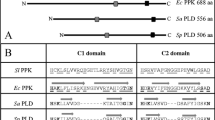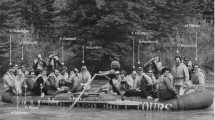Abstract
Addition of adenosine triphosphate (ATP) to [14C]ethanolamine-prelabeled NIH 3T3 fibroblasts resulted in rapid formation of [14C]ethanolamine from the prelabeled cellular phosphatidylethanolamine (PtdEtn) pool. After 2-min exposure, 10 μM ATP had near maximal effects on PtdEtn hydrolysis. Several other nucleotides, including UTP, ITP, and the stable ATP analog adenosine 5′-O-(3-thiotriphosphate) (ATPγS), also had stimulatory effects on PtdEtn hydrolysis with a potency comparable to that observed with ATP. The same nucleotides which acted on PtdEtn hydrolysis also had similar stimulatory effects on the hydrolysis of phosphatidylcholine (PtdCho) in [14C]choline-labeled cells. In isolated membranes, Mg2+ greatly enhanced the stimulatory effects of ATP and ATPγS, but not of other nucleotides, on the hydrolysis of PtdEtn and PtdCho. Results indicate that in isolated membranes, both ATP and ATPγS stimulate phospholipid hydrolysis by two different mechanisms, but in intact cells only one of these mechanisms appears to be responsive to externally added nucleotides.
Similar content being viewed by others
Abbreviations
- ATPγS:
-
adenosine 5′[β,γ-O-(3-thiotriphosphate)
- AdoPP[NH]P:
-
adenosine 5′[β,γ-imido)triphosphate
- AdoPP[CH2]P:
-
adenosine 5′[β,γ-methylene]triphosphate
- DMEM:
-
Dulbecco's modified Eagle's medium
- GTPγS:
-
guanosine-5′-O-(3-thiotriphosphate)
- PtdCho:
-
phosphatidylcholine
- PtdEtn:
-
phosphatidylethanolamine
- TLC:
-
thin-layer chromatography
References
Gordon, J.L. (1986)Biochem. J. 233, 309–319.
Dubyak, G.R., and De Young, M.B. (1985)J. Biol. Chem. 260, 10653–10661.
Dubyak, G.R. (1986)Arch. Biochem. Biophys. 245, 84–95.
Phaneuf, S., Berta, P., Casanova, J., and Cavadore, J.C. (1987)Biochem. Biophys. Res. Commun. 143, 454–460.
Okajima, F., Tokumitsu, Y., Kondo, Y., and Ui, M. (1987)J. Biol. Chem. 262, 13483–13490.
Harden, T.K., Hawkins, P.T., Stephens, L., Boyer, J.L., and Downes, C.P. (1988)Biochem. J. 252, 583–593.
Cockroft, S., and Stutchfield, J. (1989)FEBS Lett. 245, 25–29.
Van der Merwe, P.A., Wakefield, I.K., Fine, J., Millar, R.P., and Davidson, J.S. (1989)FEBS Lett. 243, 333–336.
Fine, J., Cole, P., and Davidson, J.S. (1989)Biochem. J. 263, 371–376.
Pfeilschifter, J., Thüring, B., and Festa, F. (1989)Eur. J. Biochem. 186, 509–513.
Cowen, D.S., Sanders, M., and Dubyak, G. (1990)Biochim. Biophys. Acta 1053, 195–203.
Bocckino, S.B., Blackmore, P.F., Wilson, P.B., and Exton, J.H. (1987)J. Biol. Chem. 262, 15309–15315.
Martin, T.W., and Michaelis, K. (1989)J. Biol. Chem. 264, 8847–8856.
Kiss, Z., and Anderson, W.B. (1990)J. Biol. Chem. 265, 7345–7350.
Kiss, Z., and Anderson, W.B. (1989)J. Biol. Chem. 264, 1484–1487.
Kiss, Z. (1991)Lipids 26, 321–323.
Cook, S.J., and Wakelam, M.J.O. (1989)Biochem. J. 263, 581–587.
Kiss, Z., Chattopadhyay, J., and Pettit, G.R. (1991)Biochem. J. 273, 189–194.
Kiss, Z. (1976)Eur. J. Biochem. 67, 557–561.
Kiss, Z., and Hanoune, J. (1978)Biochim. Biophys. Acta 538, 458–472.
Kiss, Z., Crilly, K., and Chattopadhyay, J. (1991)Eur. J. Biochem. 197, 785–790.
Kanfer, J.N. (1980)Can. J. Biochem. 58, 1370–1380.
Hidaka, H., Inagaki, M., Kawamoto, S., and Sasaki, Y. (1984)Biochemistry 23, 5036–5041.
Tamaoki, T., Nomoto, H., Takahashi, I., Kato, Y., Morimoto, M., and Tomita, F. (1986)Biochem. Biophys. Res. Commun. 135, 397–402.
Nakadate, T., Yeng, A.Y., and Blumberg, P.M. (1988)Biochem. Pharmacol. 37, 1541–1545.
Staats, J., Marguardt, D., and Center, M.S. (1990)J. Biol. Chem. 265, 4084–4090.
Castagna, M., Takai, Y., Kaibuchi, K., Sano, K., Kikkawa, V., and Nishizuka, Y. (1982)J. Biol. Chem. 257, 7847–7851.
Author information
Authors and Affiliations
About this article
Cite this article
Kiss, Z., Crilly, K.S. Adenosine triphosphate (ATP) and other nucleotides stimulate the hydrolysis of phosphatidylethanolamine in intact fibroblasts. Lipids 26, 777–780 (1991). https://doi.org/10.1007/BF02536157
Received:
Accepted:
Issue Date:
DOI: https://doi.org/10.1007/BF02536157




